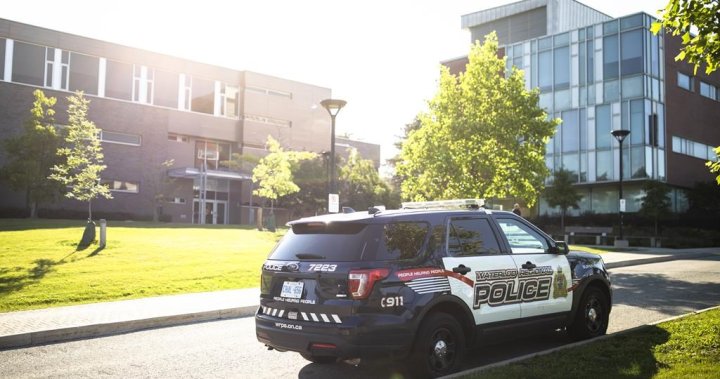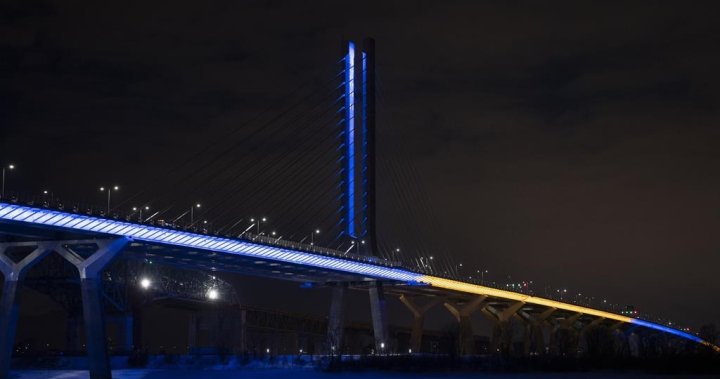Dozens gathered along the Halifax Waterfront on Wednesday to hear the Downtown Halifax Business Commission’s new pitch for improving the city’s core. As several crucial ideas were discussed, one issue of high importance for some residents was not addressed.
The unveiling of the commission’s report, titled “Vision 2030”, was constructed as a result of consultation with urban experts, policymakers, and the general public.
The document includes 17 recommendations under four main pillars — improving accessibility to the harbour, neighbourhoods, entertainment, and transportation. The report did not include any plans to expand parking.
The pitch included several recommendations to improve Halifax’s public transportation woes. Some priorities included developing a “bus rapid transit” system for downtown routes, pedestrian-first designs for streets, and establishing a complete network of protected bike lanes.
Paul MacKinnon, CEO of the Downtown Halifax Business Commission, said Halifax needs an improved transit system to properly accommodate a rapidly growing city.
“That’s something that came up in every single one of our stakeholder groups,” he said. “There’s still a place for cars coming downtown but we really need to be able to move more people much easier, much more quickly. That’s a major investment and it needs to happen in a city of our size.”
Mackinnon said many parking options already exist in downtown Halifax.
“Parking isn’t really the future of the downtown. We need to create much more excitement, many more reasons for people to get here, and to make it easier for them to come here in ways (other) than always bringing their car.”
Another suggestion from the proposal is increasing the frequency of the Dartmouth-Halifax ferry service while making it entirely free.
The commission also looks to create an “urban parks strategy”, turn more unused office spaces into homes, and develop a permanent outdoor public event area.
Joe McGuinness, a commission board member, said Halifax must capitalize on its harbour — which he described as the “city’s best asset.”
Breaking news from Canada and around the world
sent to your email, as it happens.
“It’s one of the longest boardwalks in North America. How do we capitalize on this? Whether it’s more frequent ferry services, free ferry services, more activations of the space that we have on the waterfront from events, activities, cruises, sea-doos, you name it,” he said.
“There’s a huge opportunity in this natural amphitheater that we have here.”
Public weighs in on parking debate
Kayode Facimehin, a Halifax resident, said parking in Halifax is stressful and expensive.
“To make it more convenient and accessible, they should make sure there’s enough space,” he said. “If you look around, you’ll see cars are finding it a bit difficult. Even some will park somewhere and (then) take the bus downtown. The downtown is a bit clumsy, and people are really avoiding the space.”
He said a lack of parking downtown can make it difficult for newcomers and tourists to navigate — resulting in people occasionally avoiding the area altogether.
“Even as a resident, we are finding it difficult to commute to downtown Halifax,” he said.
Stephane Tan, who also lives outside of Halifax’s downtown, said she finds the city’s parking situation “too congested.”
“Every time I come here, I try to book my appointments in the middle of the morning because I know if I do come in the afternoon or earlier in the morning, I can’t get here in time or find a parking spot,” she explained. “Sometimes, I would be 30 minutes trying to find a parking spot or sometimes I would get one but by the time I get to my appointment, it’s cancelled.”
On the contrary, Stephane’s husband John said he doesn’t think the parking issue is too bad.
“I’m not a usual commuter down here so I’m not entirely sure,” he said. “I grew up in Toronto so it’s a lot worse down there.”
MPs, councillors speak
Halifax councillor Pam Lovelace was in attendance on Wednesday. She said the ideas brought forward are reflective of a “shift and change” in the city.
“When we look at how Halifax has changed so drastically in the last five years, looking forward to 2030 seems like it’s just a blip, but it’s an immense opportunity to collaborate,” she said.
Lovelace said she hopes that increased development will create opportunities for more people to live and work in the downtown area.
When it comes to parking, Lovelace said it is an issue that every growing city is grappling with — but it comes down to people making themselves more aware of available parking spaces.
“I haven’t had issues with parking,” she said.
“Quite frankly, it’s really about knowledge. Understanding where can you park, knowing where the parking space is adjacent to where you need to be but also be willing to walk or take the bus … I think really it’s about helping people understand how to maneuver through the city.”
Lovelace said she hopes to improve communications to help residents and newcomers better navigate through the city.
Applying the vision
Looking ahead, Mackinnon said he doesn’t want to be contemplating whether the city is “moving in the right direction” by 2030 — citing recent waterfront development as an approach that he hopes to see applied throughout the greater downtown area.
“This is a great example. This used to be a parking lot,” he said, pointing to the newly developed Queen’s Marque area on the city’s harbour. “Now this is an amazing space. This only happened because of vision and forethought.”
He said he doesn’t want people to argue about whether or not the city is “more exciting” in the years to come and hopes to only see Halifax’s downtown move in an upward trajectory.
“We want everyone to agree that it absolutely is more exciting, it’s busier, it’s more vibrant. That’s really the future that we want for downtown Halifax,” he said.
— with files from Skye Bryden-Blom






